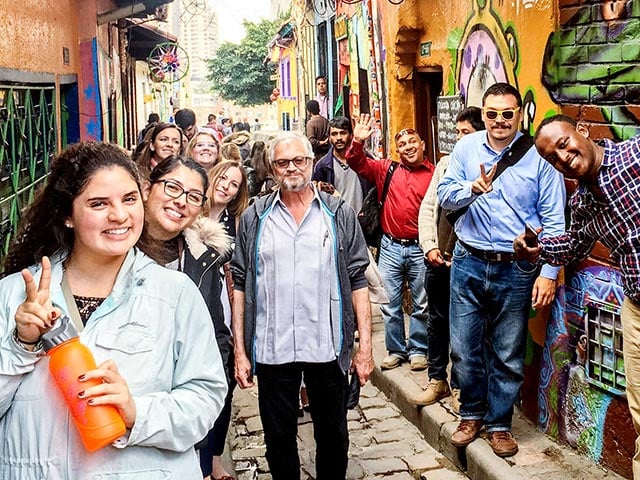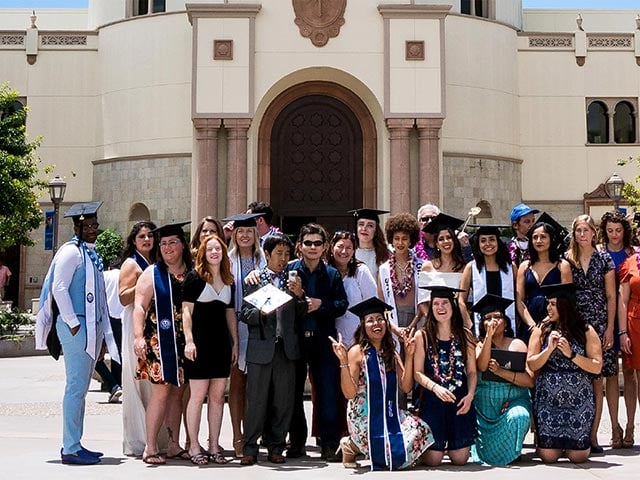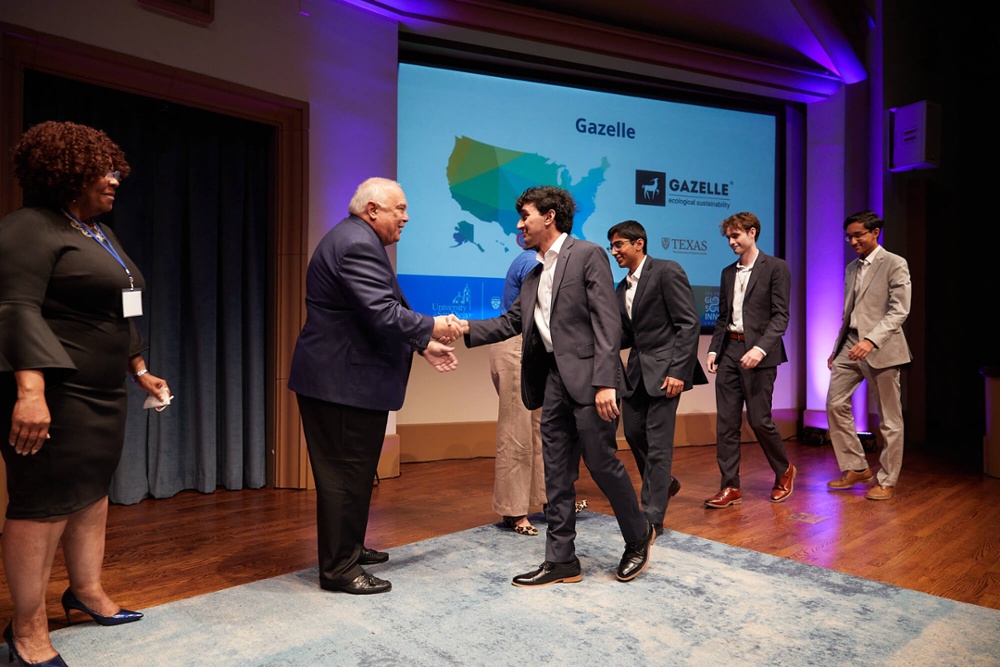It has become clear that our existing institutions and systems do not address current problems at local, national and global levels. In fact, it is the status quo that often creates or perpetuates existing social problems. Our hyperconnected, fast-moving and complex world demands fresh ideas, alternative approaches and new ways of doing things to shape a better, inclusive and equitable future.
Social innovation as a practice allows change agents to step back from the traditional and often flawed ways of thinking about social issues and allows them to affect how existing systems — whether associated with gender equality, law enforcement, poverty or any of hundreds of other issues that hold people back — keep vulnerable populations from accessing necessary resources or reaching their goals.
At the University of San Diego’s Joan B. Kroc School of Peace Studies, Professor Austin Choi-Fitzpatrick uses the term social innovation as a way to describe humanity’s ongoing “… efforts to develop new (or resurrect old!) ways to make the world a more just, equitable and habitable place.”
Professor of Practice Juan F. Roche speaks of social innovation as “… any process that develops and deploys effective solutions to systematic social problems, either to solve them or manage them to advance social progress.”
The Dammeyer Distinguished Professor of Global Leadership and Education, Paula Cordeiro, emphasizes that “… social innovation requires novel thinking — new ideas, processes, strategies or organizational models that meet societal needs in a better way than the existing solution.”
These professors’ views affirm that social innovation aims to better meet social needs and advance social progress. For some problems, it is enough to find a solution, but for others, no progress toward peace and justice is possible until there is a disruption of systems that perpetuate injustice and oppression. Social innovation can be an avenue that brings about real change.
What is Social Entrepreneurship
If there is one truism about humanity, it is that no one person has all the answers. We need a multitude of changemakers with entrepreneurial mindsets working together across all fields because many of humanity’s most challenging problems can only be solved through collaboration between people from different backgrounds.
Social entrepreneurs are changemakers and innovators who create new organizations with social impact at the center of their business models.
The good news is that, no matter what career field you want to enter, you can find examples of social entrepreneurship to guide you. To summarize the massive efforts worldwide, let’s look at the following social enterprises in the nonprofit, business and government sectors.
Social Entrepreneurship in the Nonprofit Sector
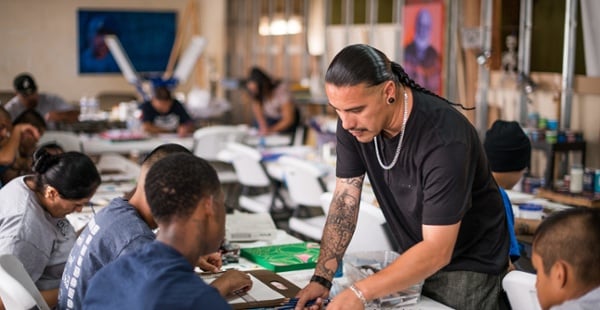
Homeboy Industries was created in East Los Angeles during the height of the 1980s gang and drug epidemics. At the time, young people in gangs or ex-gang members faced little support from institutions. Homeboy Industries innovated to change and provide training and career opportunities for former gang members to transform their lives.
Today, they follow a three-part strategy:; (1) standing up for the humanity and rehabilitation of gang members; (2) helping them to heal from their traumas; and (3) investing in their future. They also offer an 18-month job training and reentry program, substance abuse assistance, and other helpful services.
In a time when most communities responded to gang members as simple criminals, Homeboy Industries offered an alternative to the traditional societal answers to gang activity. In 2022 alone, they enrolled 472 former gang members in their 18-month job training program, provided 11,840 gang-affiliated tattoo removal treatments, and sponsored 3,680 therapy sessions.
Today, the Global Homeboy Network includes more than 400 organizations around the world helping similarly disenfranchised people and provide others with a hopeful future.
But what differentiates it as a nonprofit utilizing the principles of social innovation? Homeboy Industries is unlike traditional nonprofit organizations financed through donations or grants. It has developed successful revenue streams, including a cafe (Homegirl Cafe) and retail shop, to help sustain operations while helping people through their rehabilitation.
Social Entrepreneurship in the Business Sector

Patagonia, now one of fashion's favorite outdoor brands, began as a small business operating out of Yvon Chouinard’s parents’ backyard or the trunk of his car.
An avid climber and outdoorsman from a young age, Yvon had a knack for identifying areas for improvement in his climbing gear. He forged his own climbing spikes by repurposing old materials and later started selling them when colleagues found out and expressed interest.
However, there was a problem—the spikes damaged the cracks in the rocks. So, Yvon designed a solution. He made aluminum chocks that could be wedged into the rocks (instead of spikes that were hammered), preserving the rock face. He sold them in his company catalog and within a few months, sales for the new climbing chocks surpassed sales for the spikes.
Yvon also revolutionized standard attire for the mountaineering community, popularizing new materials that could withstand the rigors of climbing, all while retaining their flexibility and functionality. It was at this point that Patagonia became a thought leader in the mountaineering and outdoor recreation space, publishing articles that offered instruction and education alongside their products.
But perhaps Patagonia’s greatest claim to social innovation is its sustained effort, from the time they were a small company to now as a large business, to preserve environmental resources and reverse the effects of climate change. Patagonia continually exceeds its pledge to environmental responsibility by retrofitting its warehouses to be more energy-efficient, studying the environmental impact of its garment manufacturing, working to reduce its negative environmental footprint, leading the garment industry in clothing recycling initiatives, and more. In 2012, the company ran its now-famous “Don’t Buy This Jacket” ad in the New York Times because Patagonia believed it was time for them to address the issue of consumerism head-on. Their website states that “to lighten our environmental footprint, everyone needs to consume less.”
Businesses need to make fewer things but of higher quality. Customers need to think twice before they buy. Why? Because everything we make takes something from the planet we can’t give back.
Social Entrepreneurship in the Government Sector
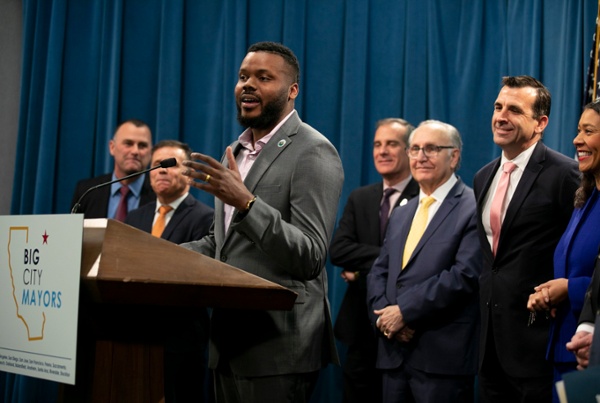
Social innovation can be leveraged at every level of government to benefit the populations it serves. One example is former Mayor Michael Tubbs’ initiative to provide universal basic income (UBI) to the people of Stockton, CA.
Beginning in 2019, Tubbs initiated an 18-month UBI pilot program to increase income stability and offer a financial lifeline to low-income residents. 125 people were chosen to receive $500 per month through February 2021. While the concept of UBI is not new, implementing and studying this program signals social innovation in government for the United States, a country that has traditionally expressed reservations about this kind of system.
However, the Stockton pilot program appears to disprove existing fears about how beneficiaries will spend the income. A preliminary analysis of the reporting data suggests that recipients primarily used the money for necessities (e.g., food, rent, utilities, gas, medical care and procedures, and other emergencies).
“We're seeing that something as small as $500 isn't enough to replace work, isn't enough to change the nature of this country,” Mayor Tubbs said. “But it is enough to allow people who are working hard, who are contributing, just a floor to stand on as they seek to build and better their lives and the lives of their communities.”
There are countless encouraging stories about the program's impact. One recipient used the funds to take unpaid time off work to interview for a better-paying job. Thanks to that interview, his new job allows him to pay for his children’s tutoring. Other recipients have used the money to pay down debts and buy the medical items they needed but couldn’t afford.
Fundamentally, Mayor Tubbs saw this program as a “rejection of the scarcity mindset,” and an investment in everyday Americans. "The goal, Tubbs said, is to convince the federal government to launch a guaranteed income program by providing ‘the stories and the cover to do what is right.’ ”
The program's success has fueled renewed interest in establishing and studying similar programs across the United States. Currently, more than 40 mayors have joined the Mayors for a Guaranteed Income organization and have pledged to support UBI programs as a means of alleviating poverty and working toward shared prosperity in the U.S.
How USD's Master in Social Innovation (MASI) Can Help You Achieve Your Social Innovation Goals
Problem-solving through innovation is becoming a required skill across disciplines and industries. At the Kroc School, we recognize social innovation as a critical tool in tackling social challenges.
We know that promoting peace and shared prosperity means analyzing the root causes of social problems and creating and implementing solutions through professionally designed and managed programs. Our Master of Arts in Social Innovation (MASI) students graduate with the practical skills and experience in wielding innovation to lead impactful careers.
Human-centered design is at the heart of the MASI program. We believe effective solutions result from listening closely to, deeply understanding and working with affected communities. We also believe that changemakers must know how to investigate and understand the underlying causes of social challenges, which is the first critical step toward problem-solving.
Become a Social Entrepreneur at The Kroc School
Such tools, coupled with the knowledge and understanding the MASI program delivers, can mean the difference between creating a solution that treats the root cause of the problem instead only a symptom of it or creating a solution that works for the long-term vs. only the short-term. Without a human-centered approach and deep historical understanding, peacebuilders risk proposing solutions that cause unintentional harm, despite genuine efforts to effect positive change.
To learn more about the field of social innovation and how you can get started, be sure to explore our guide — What is Social Innovation: A Guide for Activists, Changemakers, and Innovators Who Want to Lead Social Change.
Discover your path to positive change. Take the Quiz
You can also explore the MASI program at the Joan B. Kroc School of Peace.
Questions? Schedule a meeting with admissions.

About the Author
The Joan B. Kroc School of Peace Studies (Kroc School) at the University of San Diego is the global hub for peacebuilding and social innovation. Founded in 2007, the Kroc School equips the next generation of innovative changemakers to shape more peaceful and just societies. We offer master's degrees in peace and justice, social innovation, humanitarian action, conflict management and resolution, and a dual degree in peace and law — programs that have attracted diverse and dynamic students from more than 50 countries. In addition to our graduate programs, the Kroc School is home to the Kroc Institute for Peace and Justice (Kroc IPJ). Founded in 2001, the Institute supports positive change beyond the classroom. Through groundbreaking research, experiential learning, and forward-thinking programs, the Kroc School and Kroc IPJ are shaping a future in which peaceful co-existence is the new normal.


